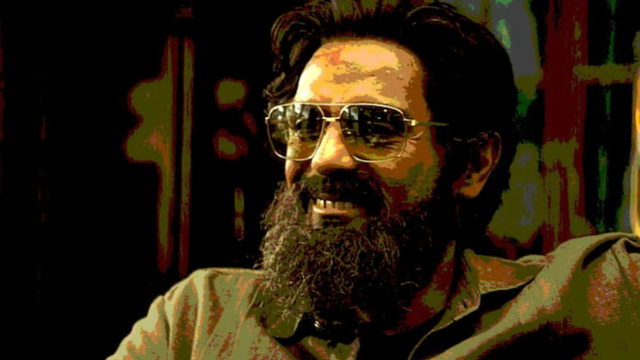November 19, 2025 : The newly released trailer of “Dhurandhar”, an upcoming political thriller, has ignited intense discussion across India’s strategic and online community. The film, which promises to explore the complexities of national security, counterterrorism, and covert warfare, prominently references Pakistan’s alleged long-standing ‘Bleed India with a Thousand Cuts’ strategy—a doctrine Indian experts have long described as Islamabad’s indirect approach to weakening India without engaging in full-scale conflict.
The explosive trailer, packed with tension, dramatic monologues, and fast-paced visuals, has quickly gone viral, earning praise for its unflinching portrayal of geopolitics. At the same time, it has stirred debate, with some questioning the impact such films may have on public perception and India-Pakistan relations.
A Doctrine Rooted in Proxy War
The phrase “Bleed India with a Thousand Cuts” became publicly associated with Pakistan’s covert strategy starting in the 1980s. Indian security analysts assert that this doctrine embraced the use of proxy militant outfits, cross-border infiltration, targeted terror attacks, and psychological warfare to destabilize India internally.
The strategy allegedly aimed to weaken India’s social harmony, strain its economy, and keep its security forces constantly engaged on multiple fronts. Over the decades, several terror attacks—including those in Kashmir and major metros—have been linked to Pakistan-based groups, further reinforcing the perception of a shadow war.
“Dhurandhar,” through its cinematic universe, appears to dramatize these allegations by revealing how such covert policies impact national security officers, families, and civilians caught in the crossfire.
Dhurandhar Trailer: What It Shows
The trailer introduces a gritty, hard-hitting narrative centered around Indian intelligence officers racing against time to dismantle a terror network. Key sequences highlight:
- Intelligence intercepts hinting at a massive planned attack
- Political pressure and bureaucratic hurdles faced by agencies
- Psychological manipulation and brainwashing of young recruits
- Interrogation rooms, encrypted communication, and covert ops
- A shadowy antagonist linked to Pakistan’s deep state
The trailer’s intensity lies not just in action but in its thematic depth, showcasing how modern warfare has shifted from battlefields to cyberspace, disinformation, and ideological manipulation.
The lead actors deliver powerful dialogues such as:
“They don’t need war. They need chaos. And chaos bleeds a nation to death.”
Such lines underline the film’s intention to probe the subtler dimensions of national security—a subject often ignored by mainstream cinema.
Public Reaction: Admiration and Anxiety
Within hours of its release, the trailer dominated social media platforms, with viewers praising its realism, gripping tone, and technical finesse. Many expressed excitement about a film that dives deeply into geopolitics rather than offering superficial patriotism.
However, some analysts and commentators caution that films dealing with Indo-Pak tensions must tread carefully. While creative expression is essential, they warn against narratives that could escalate hostility, especially in a region already marked by long-time geopolitical volatility.
Supporters argue that the film merely reflects real security challenges and brings crucial topics into public discourse. They contend that hiding such realities serves no one—awareness strengthens national resilience.
Relevance in Today’s Strategic Climate
The trailer’s timing also adds to its impact. India has faced increasing concerns over:
- Cross-border infiltration attempts
- Terror funding pipelines
- Radicalization modules in South Asia
- Cyber threats from state-sponsored actors
In this context, “Dhurandhar” taps into current anxieties regarding hybrid warfare—an evolving form of conflict where military, cyber, economic, and psychological operations blend seamlessly.
The reference to the “Bleed India” doctrine resonates strongly because strategists believe covert tactics continue to evolve, now expanding into social media influence operations, fake propaganda, and encrypted communication networks.
Cinema as a Tool of Awareness
Films like “Dhurandhar” play a dual role: entertainment and education. Past films—“Uri,” “Baby,” and “Madras Café”—were praised for bringing intelligence operations into mainstream conversation. If early reactions are any indication, “Dhurandhar” may follow the same path.
Critics highlight that well-researched cinema can help audiences understand:
- The sacrifices of intelligence and military personnel
- The complexities of terror networks
- The geopolitical motivations behind proxy conflicts
- The emotional toll on families of security forces
At the same time, some warn that sensationalism must be avoided. Overdramatizing real conflicts could oversimplify the nuanced history of Indo-Pak tensions.
What to Expect When the Film Releases
Based on the trailer’s tone and public response, “Dhurandhar” is expected to deliver:
- A tightly woven thriller with high emotional stakes
- Strong performances and realistic action choreography
- Detailed portrayal of intelligence strategies
- A deep dive into state-sponsored militancy
Filmmakers have confirmed that extensive research, interviews with former officers, and access to declassified material helped shape the script—raising expectations of a grounded political thriller.
Whether the film sparks constructive conversation or controversy remains to be seen, but one thing is certain: “Dhurandhar” has already become one of the most talked-about films of the season.
Summary
The explosive “Dhurandhar” trailer reignites debate on Pakistan’s alleged “Bleed India” strategy, highlighting covert warfare, intelligence battles, and geopolitical tensions, while audiences praise its realism and gripping narrative.


